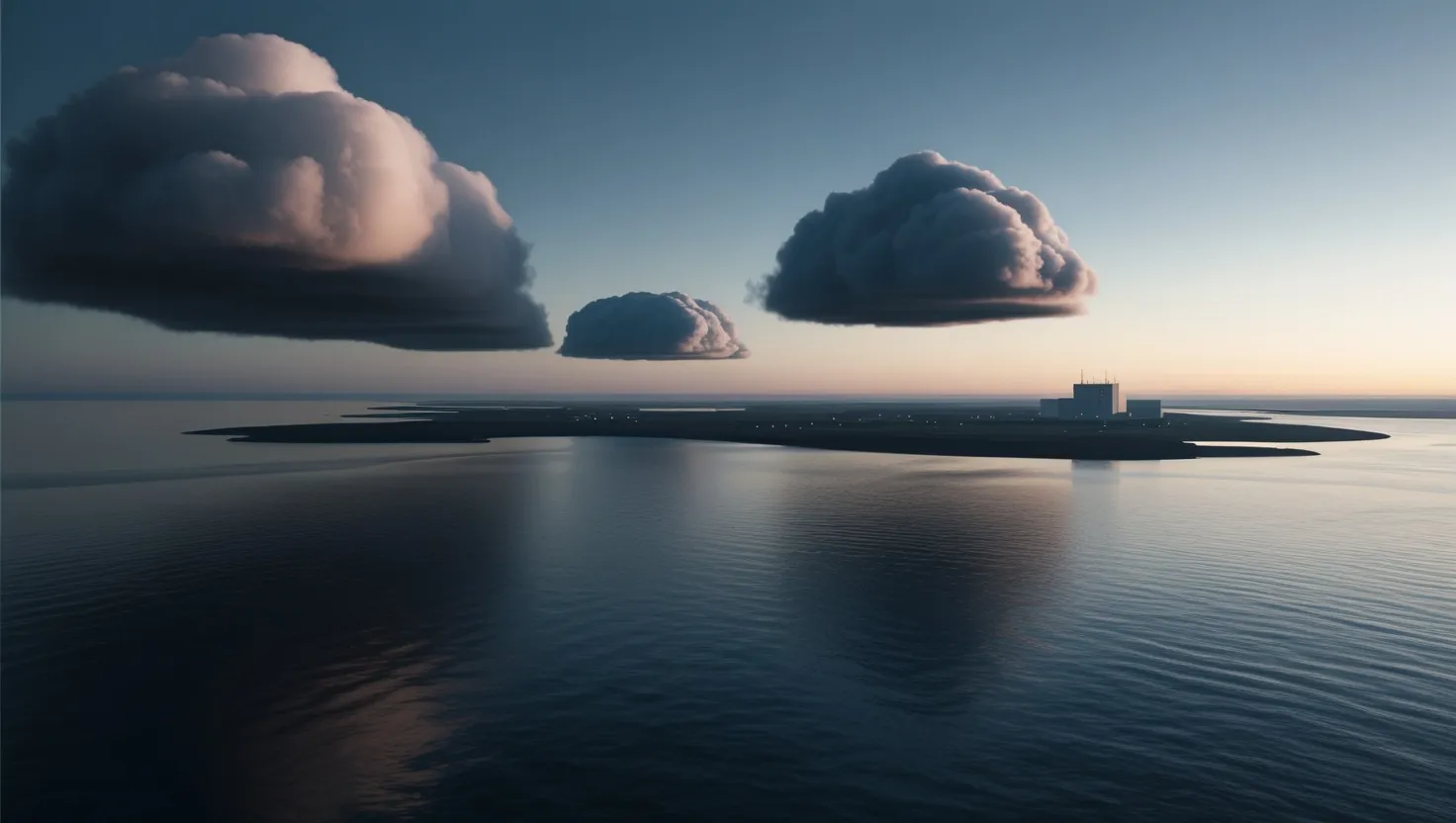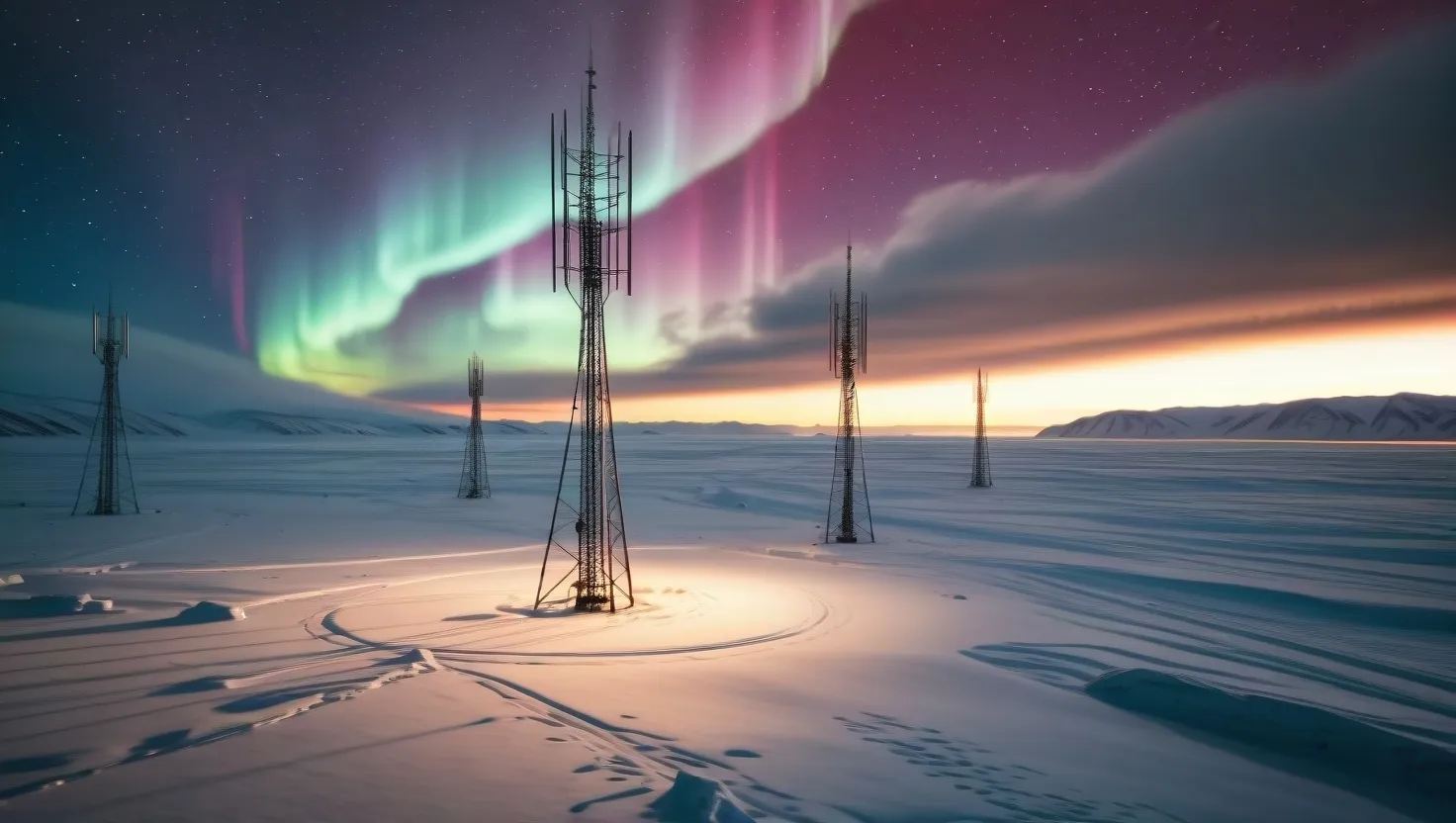The Baltic Sea has long been a region of intrigue and mystery, with its rich history and unique ecosystem. But in recent years, it has become the center of a controversy that could have far-reaching implications for our understanding of climate change and human intervention in natural systems.
In 1997, Swedish meteorologists noticed something strange happening over the Baltic. Unusual weather patterns began to emerge, defying conventional meteorological models and raising eyebrows among the scientific community. These anomalies coincided with the activation of a classified research facility on the Estonian coast, leading some to speculate about the possibility of secret climate modification experiments.
The weather data from this period shows persistent temperature inversions and cloud formations that simply shouldn’t have existed according to our understanding of atmospheric physics. Even more bizarrely, satellite imagery revealed geometric patterns in cloud structures that maintained their shape despite strong winds, suggesting some form of artificial stabilization.
“We shape our buildings; thereafter they shape us,” Winston Churchill once said. Perhaps the same could be said of our attempts to shape the climate. Are we on the verge of fundamentally altering the very systems that sustain life on Earth?
As I delved deeper into this mystery, I uncovered reports from former employees of the Estonian facility. They spoke of testing something called “atmospheric resonance technology” for weather control purposes. While the details were vague, it painted a picture of ambitious experiments aimed at manipulating atmospheric conditions on a large scale.
Declassified documents from the period mention experiments with aerosol dispersal and ionospheric heating. These techniques, while theoretical at the time, have since become the subject of intense scientific debate in the field of geoengineering. Were these early attempts at climate modification?
Local fishermen added another layer to the story, documenting strange electrical phenomena and unexplained equipment failures at sea. Their accounts speak of eerie lights in the sky and sudden, localized storms that appeared out of nowhere. While such reports might be dismissed as tall tales in other circumstances, they align disturbingly well with the known effects of certain proposed climate engineering technologies.
Recent analysis of weather records indicates that these patterns may have contributed to unprecedented climate shifts in Northern Europe. The implications are staggering. Could localized experiments have triggered larger-scale changes in regional climate? And if so, what does this mean for our understanding of climate systems and our ability to predict and mitigate climate change?
What’s more, similar anomalies have been observed near other coastal research stations around the world, suggesting the possibility of a coordinated climate engineering program. This raises uncomfortable questions about the extent of classified research into weather modification and its potential role in shaping our climate.
“The first principle is that you must not fool yourself - and you are the easiest person to fool,” Richard Feynman once cautioned. As we grapple with the implications of these findings, we must remain vigilant against our own biases and preconceptions.
The case of the Baltic anomalies challenges official narratives about climate science while highlighting the risks of covert environmental manipulation. It forces us to confront the possibility that human intervention in climate systems may be more advanced - and more consequential - than publicly acknowledged.
As concerns about climate change continue to grow, the Baltic incidents offer compelling evidence of early weather control experiments and their unintended consequences. They serve as a stark reminder of the complexity of Earth’s climate systems and the potential dangers of attempting to manipulate them without fully understanding the ramifications.
But what if these experiments were successful in some way? Could controlled climate modification offer a solution to the looming threat of global warming? Or would it simply create new problems we can’t yet foresee?
The ethical implications are equally daunting. If such technology exists, who should control it? How can we ensure it’s used responsibly and for the benefit of all humanity? And what are the consequences of keeping such capabilities secret?
As we stand on the precipice of a climate crisis, these questions become increasingly urgent. The Baltic Butterfly Effect, as some have dubbed it, serves as a cautionary tale about the unforeseen consequences of our actions on complex natural systems.
It’s a reminder that in our quest to control nature, we may inadvertently set in motion forces beyond our comprehension or control. As the renowned chaos theorist Edward Lorenz once said, “Chaos: When the present determines the future, but the approximate present does not approximately determine the future.”
This principle, known as the butterfly effect, suggests that small changes in initial conditions can lead to large-scale and unpredictable consequences. In the case of climate engineering, even well-intentioned interventions could potentially trigger cascading effects throughout the global climate system.
The Baltic anomalies also highlight the need for greater transparency and international cooperation in climate research. If covert climate modification programs do exist, their potential impact on global weather patterns makes them a matter of international concern.
“In a time of universal deceit, telling the truth is a revolutionary act,” George Orwell once wrote. Perhaps it’s time for a revolution in how we approach climate science and policy, one that prioritizes openness, collaboration, and a holistic understanding of Earth’s systems.
As we move forward, we must grapple with the implications of the Baltic Butterfly Effect. It challenges us to think critically about our relationship with the environment and our attempts to control it. It reminds us of the interconnectedness of global systems and the potential for localized actions to have far-reaching consequences.
Moreover, it underscores the importance of considering unintended consequences in our approach to climate change mitigation. As we explore potential solutions, from renewable energy to carbon capture, we must remain mindful of the complex interactions within Earth’s climate system.
The Baltic case also raises important questions about the role of technology in addressing environmental challenges. While technological solutions may offer promising avenues for combating climate change, they also carry risks. How can we balance the potential benefits of climate engineering against the dangers of unintended consequences?
As we confront the realities of a changing climate, the lessons of the Baltic Butterfly Effect become increasingly relevant. They remind us of the need for caution, transparency, and a deep respect for the complexity of natural systems.
In the end, perhaps the most important question is this: How will we choose to shape our future? Will we continue down the path of covert manipulation and unilateral action? Or will we embrace a more open, collaborative approach to understanding and addressing the challenges of climate change?
The choice is ours, but the consequences will be felt by generations to come. As we stand at this crossroads, let us heed the words of Carl Sagan: “Somewhere, something incredible is waiting to be known.” In our quest to understand and protect our planet, may we approach the unknown with humility, wisdom, and an unwavering commitment to the truth.






